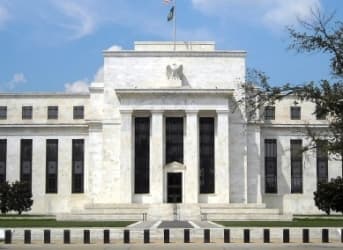The Federal Reserve is about to raise interest rates for the first time in almost ten years and it couldn’t come at a worse time for the oil and gas industry.
On the one hand, the oil boom was fueled by loose money from the Fed. With near-zero interest rates, money flowed into capital-intensive shale oil and gas drilling for many years. That succeeded in creating a production boom. But the boom was too successful – the glut caused prices to crash. In this sense, the Fed helped inflate the drilling bubble, which burst in 2014.
Now the Fed is trying the difficult task of trying to withdraw its heavy hand from the global economy. But it will do so gradually and slowly. That will lead to a just a tiny increase in short-term interest rates, likely by 0.25 percentage points. Few expect long-term interest rates to rise to levels seen before the 2008 financial crisis anytime soon. As such, rates could remain low for decades.
But a rate hike will still add one more bearish element to oil markets already replete with negative forces. First, higher interest rates will raise the cost of money. That will make borrowing more expensive, particularly for high-yield firms that are seen as particularly risky right now. If that means more drillers lose their access to finance, or are unable to tap finance at reasonable rates, more companies could go bankrupt. Related: This Suggests An Oil Price Recovery Might Be On Its Way
Second, higher interest rates will strengthen the U.S. dollar, and with crude oil priced in dollars, the Fed could put downward pressure on oil prices.
This comes at a time when the IEA sees little reason to think markets will balance out in the short-term in the face of “unrelenting oversupply.” The IEA believes the supply overhang will persist, as storage levels pile up. “[A]s inventories continue to swell into 2016, there will still be a lot of oil weighing on the market,” the Paris-based agency concluded in its latest monthly report.
This will increase the rate of bankruptcies in the oil and gas sector. Dolphin Group, a Norwegian offshore seismic surveyor for oil and gas drillers, filed for bankruptcy on December 14. The decision came from the Oslo-based company “because of the market has further deteriorated and that the expected timeline for an uplift in the market conditions has been further extended,” Dolphin said in a press release. Related: Finally Some Good News For The U.S. Oil Industry?
Separately, Cubic Energy, a Dallas-based oil company, also filed for bankruptcy in recent days. The company drills for oil and gas in Texas and Louisiana, but the keys to the firm will be handed over to its creditors.
Larger companies aren’t facing the same existential crisis, but are feeling the damage nonetheless. New cuts are underway at most of even the largest companies. Chevron and ConocoPhillips announced severe spending cuts last week. Royal Dutch Shell announced that it would lay off 2,800 workers after it completes its merger with BG Group, or about 3 percent of its workforce. That comes after previous commitments to lay off 7,500 workers. Related: Oil Markets On Edge About Fed’s Decision Tomorrow
The anxiety in the energy markets is palpable. Crude oil lost 11 percent in the week following OPEC’s decision to scrap its production target. In fact, somewhere around $230 billion in market value was erased from the share prices of energy companies since OPEC’s December 4th decision. But the sense of unease goes beyond energy markets. Slow global growth, economic stagnation in Europe, and the cracks in the Chinese economy have also contributed to instability. A rate increase from the Fed could raise some risks. “Many investors in the market have never experienced a rising rate environment, which only increases the chance for volatility to pick up next year,” Thomas Roth of Mitsubishi UFJ Securities Inc. told The Wall Street Journal.
Speculators have staked out a record number of bearish positions on crude oil, which helped push prices into the mid-$30s. While a “short covering” could spark a sudden jump in prices soon, as would be consistent with past events, the largest cumulative net-short positions on record is illustrative of the incredibly pessimistic outlook for crude oil.
ADVERTISEMENT
By Nick Cunningham of Oilprice.com
More Top Reads From Oilprice.com:
- This Oil And Gas Nation Is Doing Something It's Never Done Before
- Inflated EIA Data Could Keep Oil Prices Subdued Next Year
- Strippers Suffering From Low Oil Prices


















